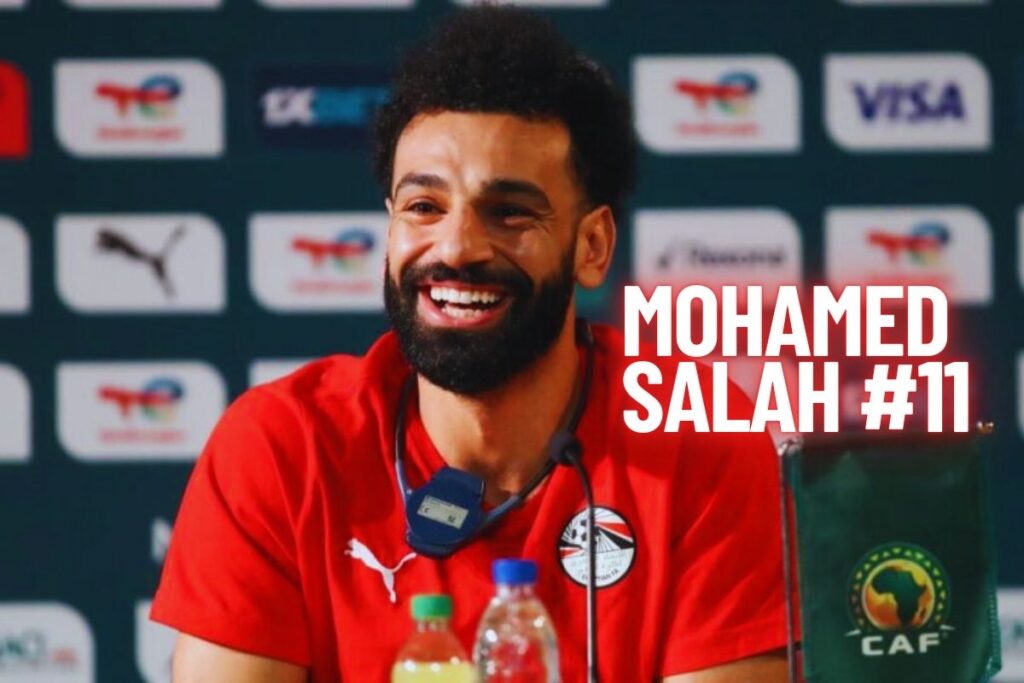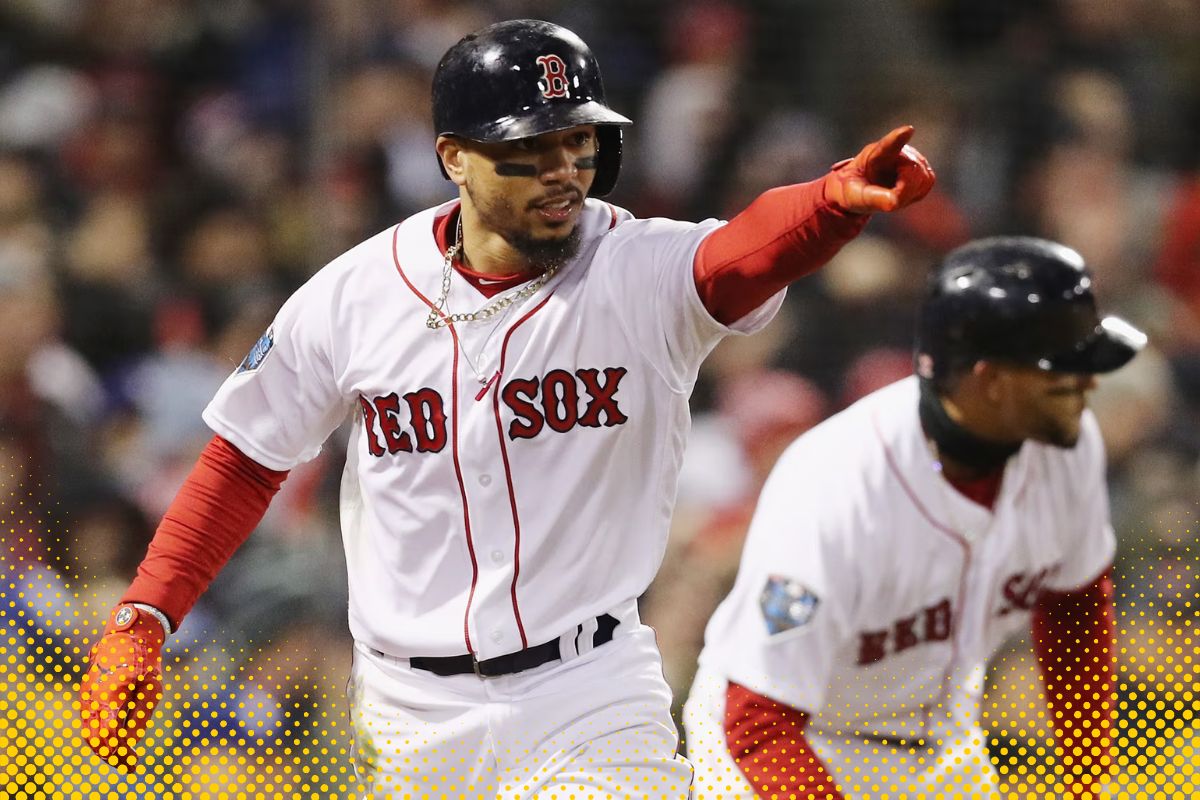Since leaving Boston five years ago, Mookie Betts has achieved remarkable success, winning two World Series titles and securing three top-five finishes in MVP voting. Therefore, Fenway Sports Group (FSG), led by John W. Henry and the majority owner of Liverpool FC, can look to its recent history for guidance in handling Mohamed Salah’s contract negotiations. In early 2020, Mookie Betts was regarded as one of the world’s top baseball players. Just over a year prior, he had been instrumental in leading the Boston Red Sox—another FSG-owned team—to a World Series victory. At 27 years old, Betts was at the height of his career, having already earned an American League MVP title and four All-Star appearances.
However, despite his incredible talent and value to the team, Betts was on the brink of becoming a free agent. This situation posed a significant challenge for FSG, which had to weigh the cost of securing Betts’ long-term future against the financial and strategic considerations of the organization. As Liverpool FC faces a similar crossroads with Salah, one of football’s elite players, FSG can draw parallels between the two scenarios. Salah, like Betts, is at his peak and a key contributor to the team’s success, making it crucial to carefully navigate his contract situation to avoid repeating history.
World Series-winning teams in 2007, 2013, and 2018
Inspired by Billy Beane’s Oakland A’s and led by the innovative, young Theo Epstein, the Boston Red Sox broke an 86-year World Series drought in 2004, partly due to their embrace of analytics. Epstein and the team, emboldened by advanced statistics, made bold decisions, such as trading Nomar Garciaparra, the beloved shortstop, mid-season, and acquiring undervalued players like Kevin Millar and David ‘Big Papi’ Ortiz, who would go on to change the franchise’s fortunes.
Using data to make strategic decisions, the Red Sox built three more World Series-winning teams in 2007, 2013, and 2018. However, when it came to Mookie Betts, analytics advised them to part ways with the star outfielder. The team’s management, believing that the length of Betts’ next contract would extend far beyond his prime years, chose financial flexibility over keeping their superstar. As a result, the Red Sox did not offer Betts a deal that aligned with his market value, leading to his departure.
Rather than risk losing Betts for nothing, the Red Sox decided to trade him to the Los Angeles Dodgers. This decision reflected their continued reliance on data-driven choices, but it also marked the end of an era, as one of the game’s brightest talents was traded away to secure a more financially sustainable future for the franchise.
‘Greatest Player in the Club’s History
In exchange for Mookie Betts, the Red Sox received a relatively modest return, including Alex Verdugo, Connor Wong, and Jeter Downs, with only Wong remaining in the organization today. Betts, however, went on to sign a remarkable 12-year, $365 million contract with the Los Angeles Dodgers.
In the five years following his departure, Betts has solidified his legacy, winning two World Series and finishing in the top five for MVP voting three times. Meanwhile, the Red Sox have struggled, managing only one winning season during that same period.
Now, Fenway Sports Group (FSG) faces a similar dilemma with their Premier League club, Liverpool FC. Mohamed Salah stands as one of the greatest players in the club’s history, having been signed from Roma in 2017 for £36.5 million. Over his tenure at Anfield, Salah has scored an impressive 223 goals in 368 appearances, playing a pivotal role in the club’s successes. He was crucial in Liverpool’s first Premier League title in 2020, ending a 30-year wait, and in their 2019 Champions League triumph. As his contract situation unfolds, Liverpool faces the challenge of balancing financial priorities with securing the future of one of their most iconic players.
No Draft Picks or Compensatory Deals
At the end of this season, Mohamed Salah’s contract with Liverpool FC will expire if not renewed, presenting a more complex dilemma than the Mookie Betts situation. Unlike in baseball, where trade could yield valuable assets, Salah’s departure would result in no compensation, as soccer does not allow for draft picks or compensatory deals when players leave as free agents.

Liverpool’s success has been largely driven by data, much like the Red Sox’s analytical approach to team building in the 21st century. The club follows an unwritten policy against offering long-term, high-value contracts to players over 30, as data suggests that performances typically decline sharply with age. At 32 years old, Salah is already Liverpool’s top earner, with a reported wage of £350,000 per week, making him the eighth-highest-paid player in the world.
Despite his age, Salah remains arguably the best player in the Premier League. Under the leadership of new manager Arne Slot, Liverpool is currently leading the league, sitting eight points ahead of defending champions Manchester City after 12 games. Salah’s contributions have been central to their success, with 10 goals and six assists, making him the team’s top performer. His form continues to justify his significant wages, but the club faces the challenge of balancing his value on the pitch with their long-term strategy and financial prudence.
There’s reason to believe that Mohamed Salah could extend his prime longer than most players his age due to his relatively late start in professional football. Unlike many superstar athletes like Wayne Rooney, Cristiano Ronaldo, or Neymar, Salah wasn’t playing 50-plus elite-level games per season in his teens. He moved to Europe at 20, signing for FC Basel in Switzerland. His career didn’t truly take off until he joined Roma in 2015 at age 23 when he first played over 1,500 minutes in a top European league. This reduced early workload could help maintain his longevity.
Moreover, replacing Salah with a player of comparable quality would likely cost much more than keeping him. Just ask the Red Sox about the difficulties in their Mookie Betts succession plan. Betts, who also wanted to stay with his team, was traded away, and his departure still stings for Boston.
Salah has expressed his desire to stay at Liverpool, though he’s disappointed by the lack of a contract offer. He acknowledged that the decision wasn’t in his hands, leaving fans and the club in suspense. While FSG adheres to a data-driven approach, they must learn from the Betts situation and avoid making the same mistake with Salah, who remains a key figure for the club.
Conclusion
Liverpool FC faces a crucial decision regarding Mohamed Salah’s future, one that mirrors the Red Sox’s costly mistake with Mookie Betts. While data-driven strategies are essential for long-term success, they must be balanced with the emotional and pragmatic value of retaining star players. Salah’s late career start and continued top-tier performance suggest he could extend his prime, making him a valuable asset for Liverpool. FSG must act wisely, avoiding a repeat of the Betts situation, and ensure that Salah’s future at the club is secured—both for his legacy and the team’s ongoing success.
Read all Other Posts on Mookie Betts and the Red Sox
Find the Latest News on Player Ratings | Transfers | Prematch | Postmatch
Stay tuned for more updates on Liverpool FC Times and Stories. Your thoughts are always welcome in the comments section. Thank you for your continued support!
YNWA (You’ll Never Walk Alone)!
The Liverpool FC Times Team
LiverpoolFCTimes.com
